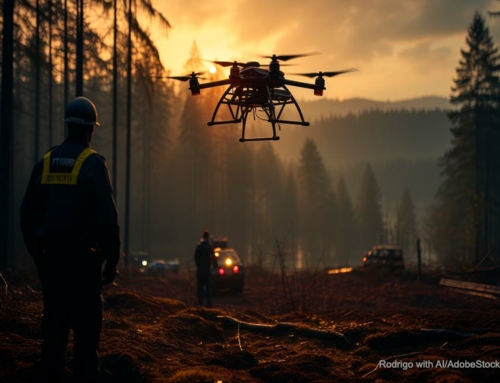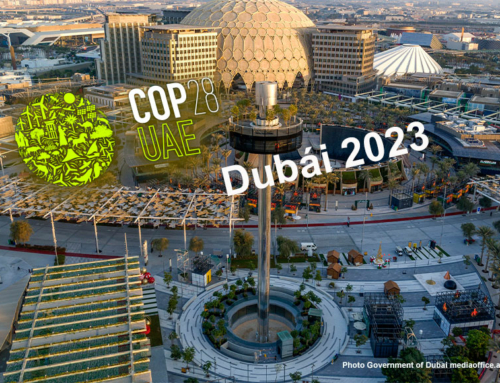On this planet, the only one with life that we know, the wide biodiversity that inhabits it is born, lives, grows, eats, sleeps, reproduces, attacks, escapes and dies using energy in all these stages. We live in a wonderful planet in which biochemical energy differentiates us from all other stars. We humans, in addition to all this, cook, light, use electrical and electronic equipment, water heaters, transport ourselves in land vehicles, boats and airplanes and in all these phases we use energy. But we do it in an unnatural way, in comparison to how it was done on Earth before our arrival.
If it is food production, we use tractors, trucks, harvesters, seeders, among many other devices. In the industry we apply with high temperature ovens and electric machineries of many types. In construction we take advantage of a variety of mega-machines. In hospitals, we are examined and treated with many medical equipment, not to mention the importance of energy in operating rooms and in birth rooms.
The energy is with us 24 hours a day and it surrounds us 365 days a year. But we rarely think of her. Only when we lack electricity, gasoline or the internet do we collapse and in that moment, we remember the enormous service they provide us. We convert energy into our ally and with its help we have taken giant steps. But if we do not handle it with the criterion of an ally, it could become our enemy in less time than we think.
A new energy terminology
In recent times we began to get used to a new language. Concepts such as “renewable energies”, “clean energies”, “green energies” took strength. Panels of “solar energy”, “wind energy” mills, “electric cars”, “lithium-ion” batteries and other “allied energies” appeared in the landscapes and in our glossary. All of them have had an important growth in the last years and are helping some countries to approach their energy independence, besides contributing to mitigate global warming.
Old energies with new extraction methods
Meanwhile, traditional energies have also proliferated. Unexpectedly, hundreds of “fracking” or “hydraulic fracturing” towers emerged, an unconventional method to extract enormous amounts of gas and oil trapped in shales at great depths. The United States has been working on this for years, in such an intense way that it is about to displace Saudi Arabia as the world’s largest oil producer. But hydrocarbons in shale are also found in almost fifty countries, of which there are already three that produce gas or oil commercially and half a dozen are experimenting to produce. Many of these nations have not been producers of oil or gas but may be tempted to join the club of hydrocarbon producing countries and try to achieve their energy independence.
New policies pursue Arctic oil
As if that were not enough, in many places the landscape continues to fill with traditional oil towers, due to the discovery of new deposits. In addition, there is a great likelihood of seeing thousands of dark oil towers contrasted with the white background of Arctic, if the lifting of the Donald Trump government ban to exploit oil fields in environmental sanctuaries near the North Pole, banned during more than 40 years. If all this continues, terms such as “global warming”, “climate change”, “greenhouse gases”, “fossil fuels” and “fracking” will remain in our mouths for a long time.
We have spent a lot of time to curb climate change
To reach all this we have gone a long way, whose starting point goes back to the times of French mathematician and physicist Jean-Baptiste Joseph Fourier, who in 1824 was the first to use the greenhouse analogy. In 1896 Svante Arrhenius, a Swedish scientist, established a relationship between CO2 concentrations and temperature. Almost half a century passed, until in 1940 it was proved that the increase of CO2 in the atmosphere causes a greater absorption of infrared radiation. In the 1950s, alarms multiplied on the problem, but very little was done. In 1988 James Hansen asserted before the United States Senate that the warming caused by man had already considerably affected the global climate. It was from then on, that the term global warming began to become popular in the press and was incorporated into colloquial language. However, nothing important was done in those times to stop the problem.
The conferences for the fight against climate change
In 1972, at the initiative of Sweden, together with the UN, the “First Earth Summit” was held, from which came the “Stockholm Declaration”, oriented towards the normalization of human beings’ relations with the environment. In 1992, the Second Earth Summit took place in Rio de Janeiro. It issued the “Rio Declaration”, reaffirmation of the “Stockholm Declaration” and gave its approval to the creation of the “United Nations Framework Convention on Climate Change”, which entered into force in March 1994. To give practical meaning to its objectives, the COP, Conference of the Parties, climatic summits that are held every year between November and December was established.
Birth and death of the Kyoto Protocol
The first COP was held in Bonn, in 1995. The most relevant conferences were: COP3, Kyoto, 1997, where the celebrated Kyoto Protocol emerged as one of the most important and hopeful documents of humanity to regulate anthropogenic activities, able to recover the global environment. Twelve years later, at COP15, Copenhagen, 2009, there was an immense hope because there the Kyoto Protocol would be signed. However, the presidents of China, United States, India, Brazil and South Africa, at the last minute drafted a non-binding agreement of just three folios that was not even voted on. He was only exposed to the “taking of knowledge” of the assistants, which was equivalent to the death of the Kyoto Protocol. The summit was described as failure and disaster by many governments and environmental organizations. It would be necessary to wait six more years until the COP21, Paris, 2015, to attend the birth of the Paris Agreement, an ambitious global contract to fight against Climate Change.
Will the Paris Agreement come into force in 2020?
At COP21, Paris, 2015, the Paris Agreement was adopted by 197 countries and its signature officially began on April 22, 2016, Earth Day. Its entry into force will be 2020. The important document considers limiting the increase in global temperature to 2 °C, starting from its pre-industrial level (1750), by reducing emissions of greenhouse gases, caused by fossil fuels such as oil, gas and coal, which when burned release CO2 into the atmosphere. With this it tries to avoid the increase of the global warming and the climatic change, and its consequences like the melting of glaciers and polar ice, rising levels of oceans and seas, floods, landslides, hurricanes, tornadoes, forest fires and other catastrophic phenomena, capable of endangering many species that inhabit the Earth, including homo sapiens.
2020, the year of truth
We hope that by 2020 we will not see the repetition of what happened with the Kyoto Protocol and we do not have to add a new link to the long chain of excuses and postponements as indicated above. If this happened, a climate conflict of great proportions would come upon us. It is not hard to imagine that the fossil fuels world clings to its oil and gas towers, due to the immense amount of capital involved. Will investors be willing to lose their money? Another warning signal is the discourse of climate change deniers. It also worries the large amount of conventional and unconventional oil that is likely to flood markets in the coming years. Consequently, there would be a collapse in gas and oil prices, to the detriment of the competitiveness of the electromobility, solar and wind energy industries. A fight that clean energies should win. If the fossil fuels succeed, what we said above would happen: our ally, the energy, would become our enemy in less time than we think.
A new concept to incorporate into our lexicon: “Change of Energy Patterns”
But it will not be enough to add this new concept and possess them only for reading or chatting. The fight against climate change must be a priority for humanity, for the countries of the world and for their inhabitants.
Sandor Alejandro Gerendas-Kiss







Leave A Comment